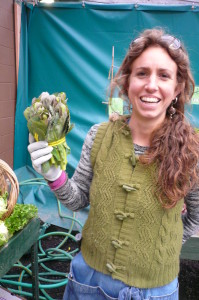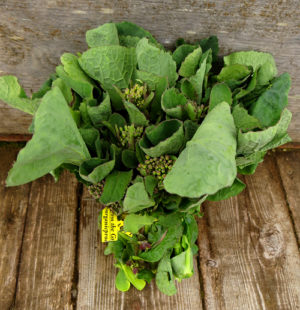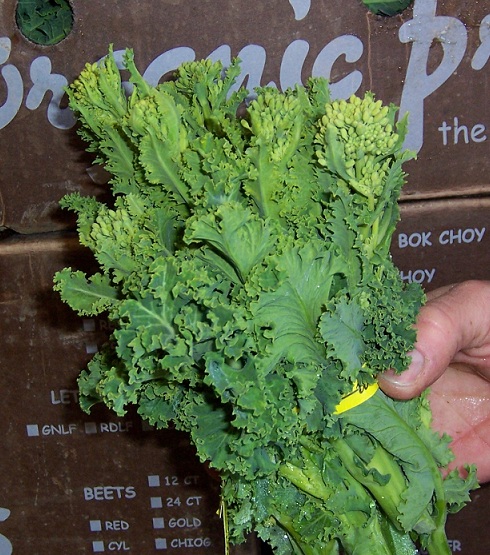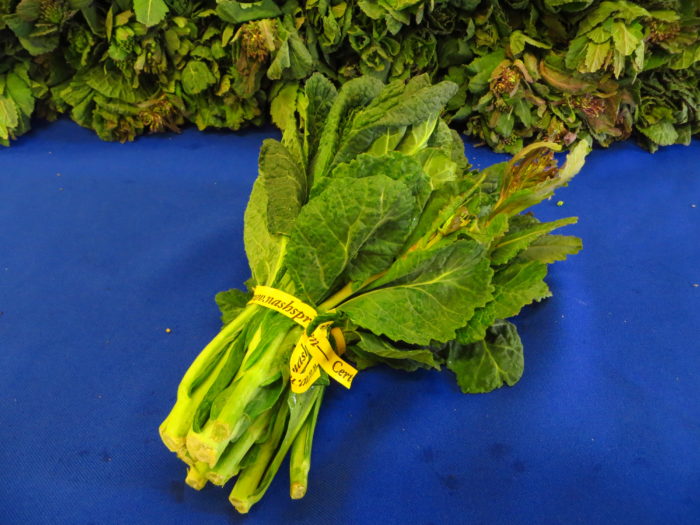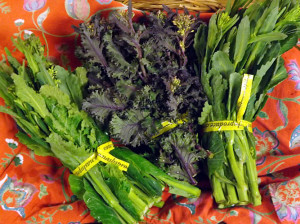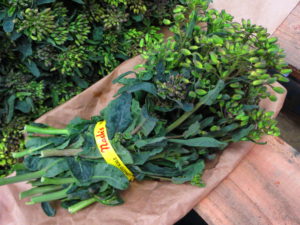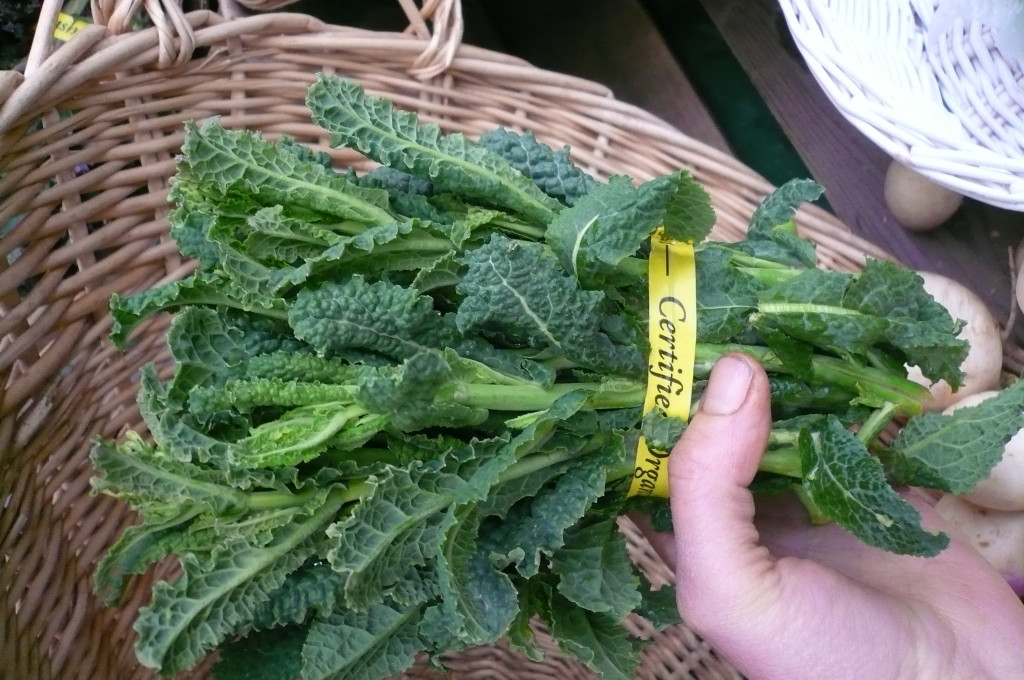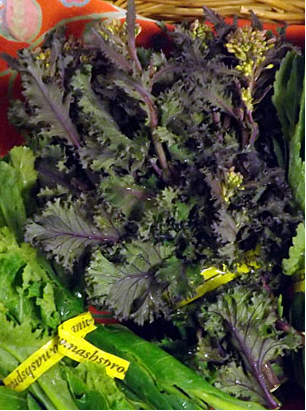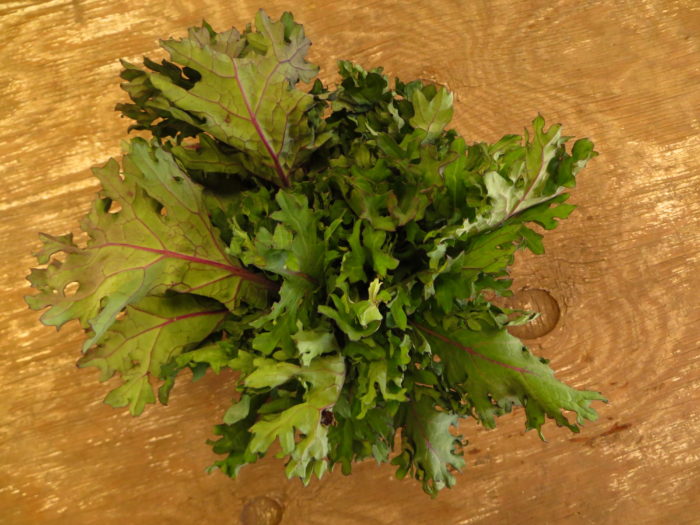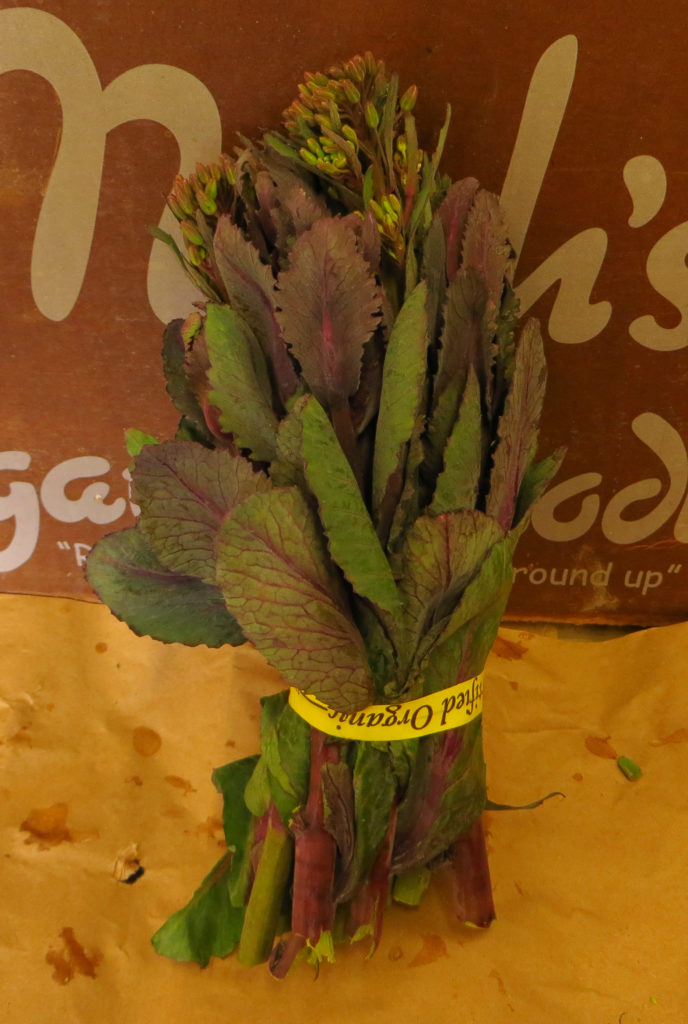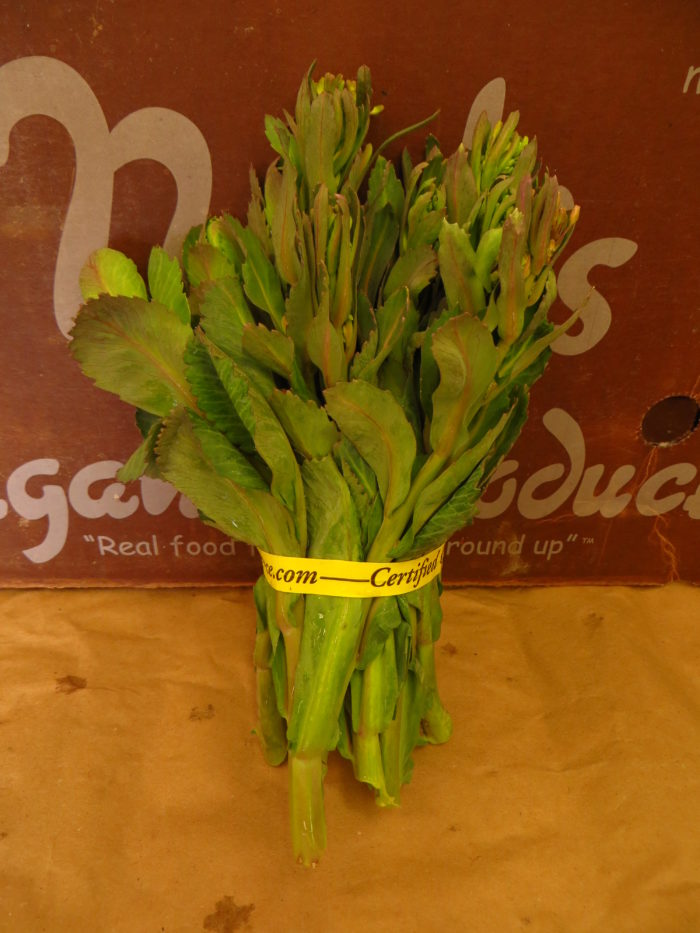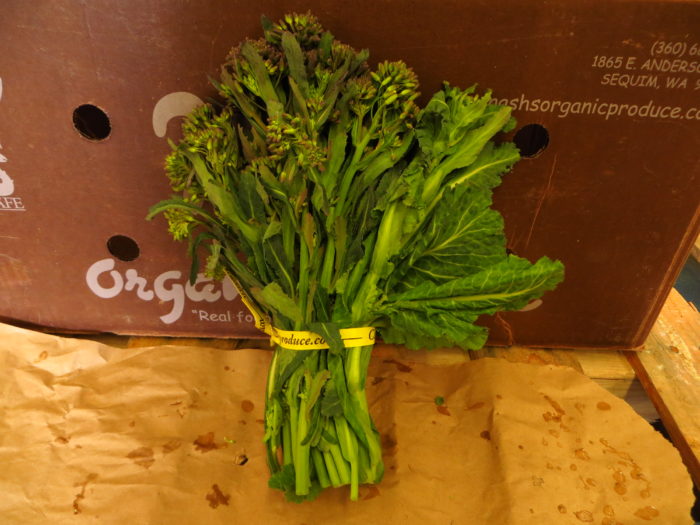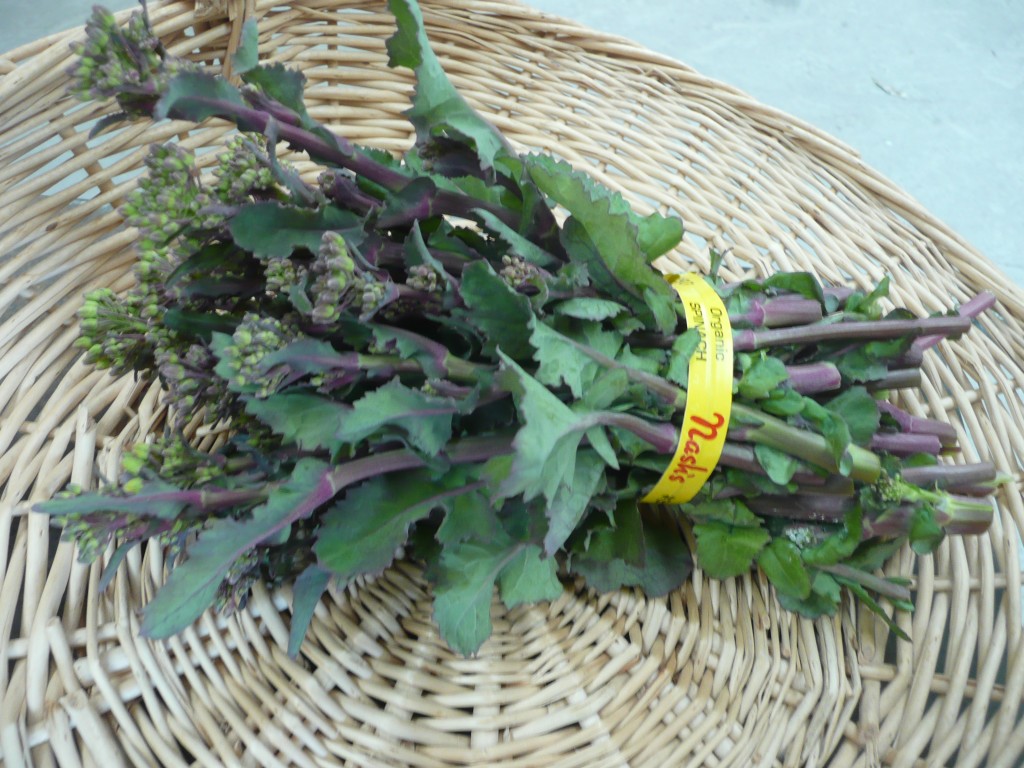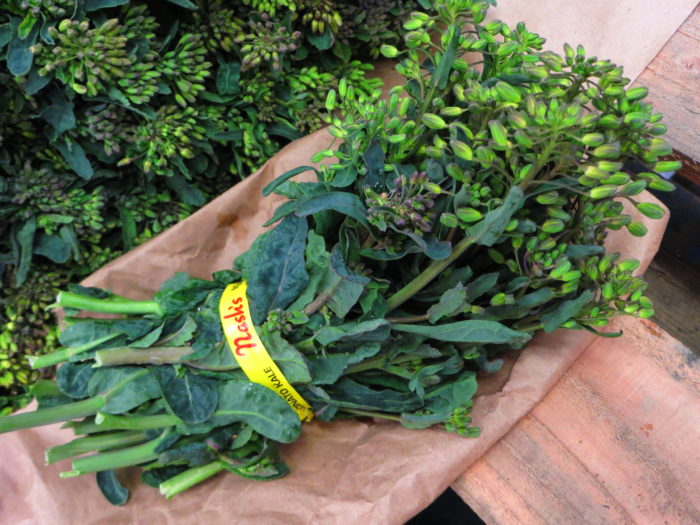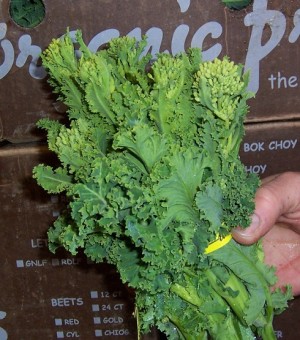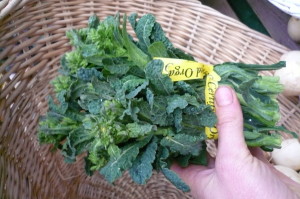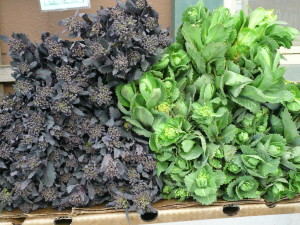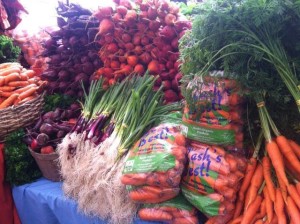In the spring, we are all getting just a little tired of root vegetables, even if they are delicious. Just in time, the brassicae send up their flowering heads and they are sweet and oh, so tender. We call these shoots “raab,” not to be confused with broccoli rabe, which is actually a variety of broccoli in and of itself.
One of the sweeter raabs that we have at Nash’s is from green cabbage. Other raabs come from various kales, Brussels sprouts, arugula, mizuna and collards. But the cabbage raab seems to put all its natural sugars into its growth in the spring.
Brassicae raabs are thought to detoxify carcinogens and are useful in many forms. Almost all parts (stems, roots, flowers, leaves and seeds) can be used as food. They are crunchy and much sweeter than you would imagine.
Have you tried this recipe? Tell us how it turned out!

 A raab is the tender flowering stem of an edible plant like cabbage, kale, brussels sprouts, collard greens, and other plants in the brassica family. These sweet veggies herald springtime and taste amazing when sauteed in garlic and olive oil.
A raab is the tender flowering stem of an edible plant like cabbage, kale, brussels sprouts, collard greens, and other plants in the brassica family. These sweet veggies herald springtime and taste amazing when sauteed in garlic and olive oil.